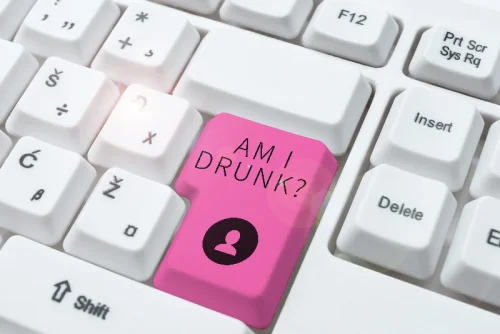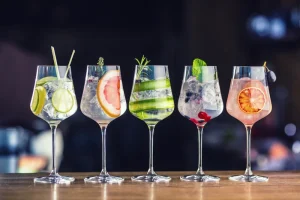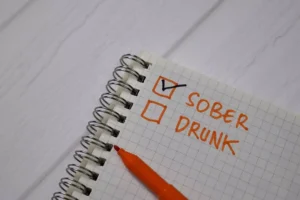Understanding Alcohol Use Disorder National Institute on Alcohol Abuse and Alcoholism NIAAA

By Buddy TBuddy T is a writer and founding member of the Online Al-Anon Outreach Committee with decades of experience writing about alcoholism. Because he is a member of a support group that stresses the importance of anonymity at the public level, he does not use his photograph or his real name on this website. 2021 NSDUH report includes selected estimates by race, ethnicity, https://ecosoberhouse.com/ and age and is the most comprehensive key findings report to date. To learn more about alcohol treatment options and search for quality care near you, please visit the NIAAA Alcohol Treatment Navigator. A health care provider might ask the following questions to assess a person’s symptoms. In some people, the initial reaction may feel like an increase in energy.
Age Differences

Cocaine directly interferes with the brain’s use of dopamine to convey messages from one neuron to another. In essence, cocaine prevents neurons from turning the dopamine signal off, why is alcohol addictive resulting in an abnormal activation of the brain’s reward pathways. In experiments on animals, cocaine caused dopamine levels to rise more than three times the normal level.
Short-Term and Long-Term Effects of Alcohol on the Brain
- These increased dopamine levels cause euphoria, reinforcing the desire to repeat pleasurable but unhealthy behaviors like taking addictive drugs.
- Although wine has a low alcohol content per serving of 12% and it’s not as strong as other forms of liquor, wine is still very potent and easy to become addicted to.
- Therefore, this article defines the most addictive substances as substances that greatly affect dopamine levels and are most likely to cause addiction.
- However, most people with AUD—no matter their age or the severity of their alcohol problems—can benefit from treatment with behavioral health therapies, medications, or both.
This desensitization causes a need to increase the dose to achieve the same pleasurable effects. Users may also experience withdrawal symptoms if they attempt to stop their drug use and abuse. An increase in tolerance marks the second stage—people drink larger doses of alcohol to experience the same effects. This leads to decreased pleasurable effects and alcohol dependence, as the person needs alcohol to feel normal. Cocaine increases euphoria, excitement, and alertness, and according to the Drug Enforcement Administration (DEA), it is highly addictive and may be regularly abused in a “binge” pattern. Binge cocaine use refers to taking doses back to back in order to maintain the “high,” which is often followed by a “crash” that can cause physical and mental fatigue, depression, and severe drug cravings.

Why Should We Be Concerned About AUD and Alcohol Addiction?

With over 100 million people in the U.S. drinking vodka, this alcoholic drink is obviously very popular. It contains 40% alcohol per serving, so it’s more potent than either of those beverages. Vodka is also much easier to become addicted to than any other drink. This alcoholic drink is known for being cheap and readily available, but that does not make it any less addictive than the other types of alcohol listed here.

However, most people with AUD—no matter their age or the severity of their alcohol problems—can benefit from treatment with behavioral health therapies, medications, or both. These increased dopamine levels cause euphoria, reinforcing the desire to repeat pleasurable but unhealthy behaviors like taking addictive drugs. At a 55% alcohol content, this Mexican alcoholic drink is one of the strongest on the market today. Tequila’s specific taste and smell make it an extremely addicting drink. Even though this type of liquor is relatively cheap and available anywhere, it is not very strong. The problem with tequila is that even if you only drink one serving, you’ll find yourself becoming addicted to the alcoholic drink quickly.
- Long-term heavy drinking can damage the brain and lead to cognitive decline.
- However, even a mild disorder can escalate and lead to serious problems, so early treatment is important.
- It produces instant but short-lived effects, so users tend to binge on them since their effects don’t last long.
- In addition to getting professional treatment and support, there are things that you can do to help feel better and improve your chances of recovery.
- It contains 40% alcohol per serving, so it’s more potent than either of those beverages.
- It also increases the risk of injury and death due to impaired judgment.
Illicit Drug Use
- In 2002 the WHO estimated there were more than 1 billion smokers and it has been estimated that tobacco will kill more than 8 million people annually by 2030.
- The significant overlap between mental health and addiction underscores the need for treatment that addresses both conditions simultaneously.
- If you feel that you sometimes drink too much alcohol, or your drinking is causing problems, or if your family is concerned about your drinking, talk with your health care provider.
Drug Abuse Financial Costs
- A properly functioning reward system motivates a person to repeat behaviors needed to thrive, such as eating and spending time with loved ones.
- Alcohol tolerance, cravings, and withdrawal symptoms are all signs of physical addiction.
- Behavioral treatments—also known as alcohol counseling, or talk therapy, and provided by licensed therapists—are aimed at changing drinking behavior.
- For more information, see our report on alcohol abuse and alcohol-related deaths.
